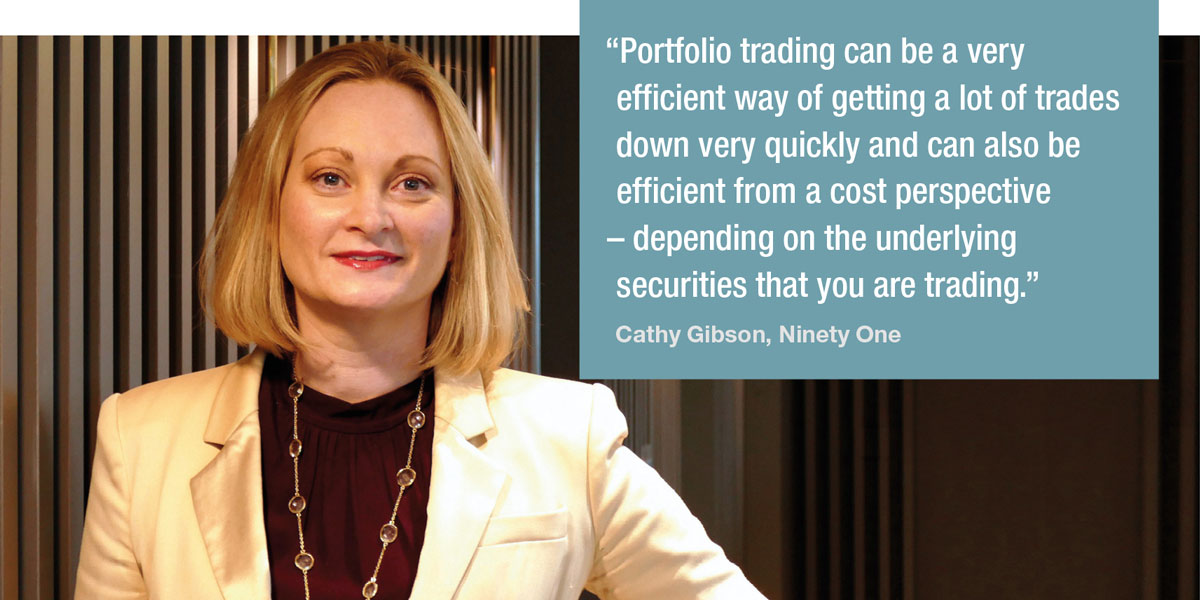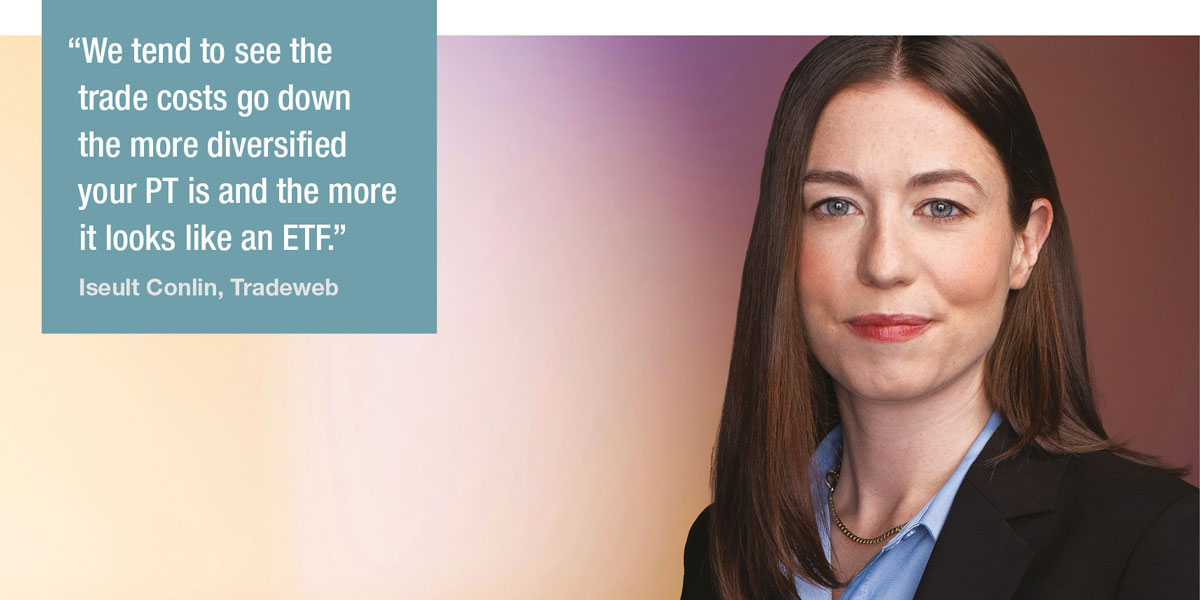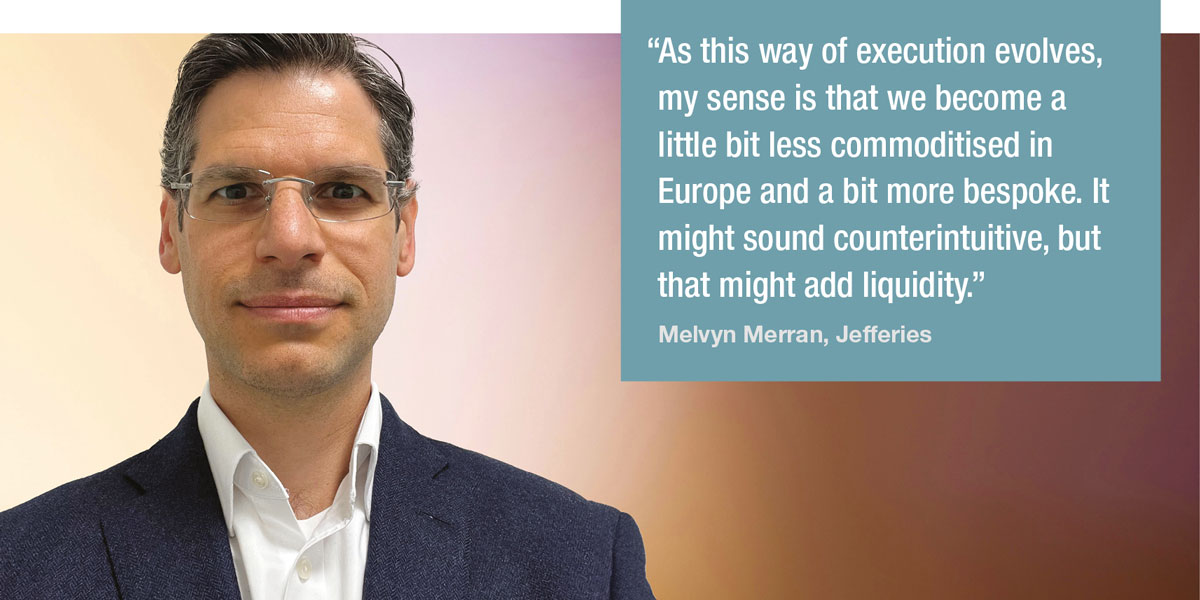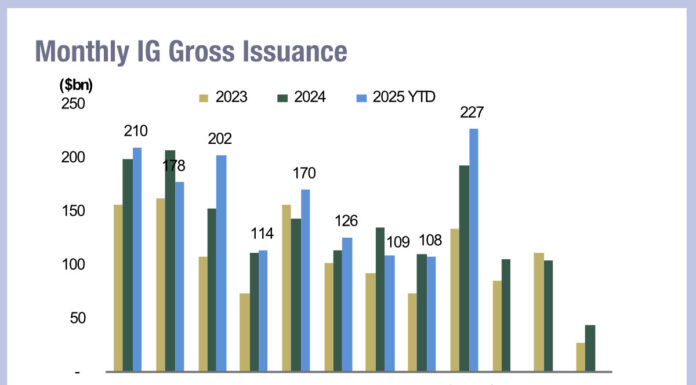Portfolio trading cannot please all of the people all of the time.
The success of portfolio trading (PT) as a protocol has taken bond markets by storm. However, the positive story around enormous trade volumes does not represent a universal salve. Buy-side traders have been keen to note there are limits to the value of PT, depending upon a range of factors, and heads of desk would do well to understand where and when PT can be best used within the toolkit of trading protocols.

Cathy Gibson, global head of trading at Ninety One, an emerging market specialist manager, says, “Portfolio trading can be a very efficient way of getting a lot of trades down very quickly and can also be efficient from a cost perspective – depending on the underlying securities that you are trading. If you are trading very liquid securities that are components of indexes, if you are doing redemptions and subscriptions for underlying ETFs, then again it makes sense.”
The capacity to trade enormous sizes – several buy-side trading heads have expressed astonishment at the notional value that can be executed in a single trade – has clearly impressed users.
“However, there is a cost to it,” notes Gibson. “You are asking a counterparty to make you a price on a trade at US$2-300 million or more – sometimes over US$500 million – and you are going to pay for that risk. You need to do your homework. You need to make sure it is going to get you optimum client outcomes.”
Establishing a clear pre-trade decision tree to deliver best execution, that includes portfolio trading as a potential outcome, needs to factor in several elements.

Are you trading indexed – and liquid – securities?
If the securities you are trading are components of an index, which is tracked by one or more exchange-traded funds (ETFs), they are likely to be easily traded as all or part of a portfolio trade, because they can be turned into/redeemed from an ETF, and frequently have a better liquidity profile.
“We tend to see the trade costs go down the more diversified your PT is and the more it looks like an ETF,” says Iseult Conlin, head of US Institutional Credit at Tradeweb. “We find a lot of emphasis on the decision to PT, request for quote (RFQ), or voice trade is expectation around the cost of this trade. In the US and Europe we rolled out really sophisticated pre-trade portfolio trade analytics that give you information on the ETF net asset value (NAV), on how diversified your trade is relative to an ETF.”
If bonds are not indexed and if they are not very liquid, dealers can struggle to offer a better price on a PT than a buy-side trading desk can achieve by working an order.
“We trade in EM and in a previous role I primarily traded in UK Sterling, which are both at the less liquid end,” says Gibson. “When we have priced portfolio trades it is too costly. We, as a trading desk, can trade more efficiently without using a portfolio trade.”
She says that her team uses careful assessment of potential trade outcomes before deciding whether to trade the bonds themselves or execute via a portfolio trade.
“We can do price analysis pre-trade and post-trade, and can show that us trading alone can have a better client outcome, that is completely dependent on the underlying securities you are trading, as to whether portfolio trades work. But clearly, they have good use cases, there are more PTs in the market, and they are creeping into the moderately less liquid space.”

Melvyn Merran, managing director for Fixed Income Quantitative Trading at Jefferies, says there are also edge cases, where traders need to think carefully if portfolio trading is right to use.
“Firstly, use the ETFs premium/discount as a reference point for the beta component of the portfolio,” he says. “A steep premium/discount to NAV reflects a rather tense, one-sided trading environment. A portfolio OWICs when premium is very high, will deliver a poor cost-execution versus bond’s mid, and vice versa. Secondly, many are confusing list trading and portfolio trades. Portfolio trades aim to deliver ease of execution and/or cost-efficient bid-offer, usually better than a line-by-line trade. The caveat is how the portfolio is constructed. You want your list to be diversified and granular, across risk, duration, issuer… exactly what a create-redeem basket for an exchange traded fund (ETF) looks like. Only then liquidity can be transferable between ETFs and a bespoke list of bonds.”
If clients trade with a diversified portfolio but with a tail, i.e. bonds that are very pricey, or quite illiquid, that affects the whole trade, he warns.
Where are you trading?
The market you are trading in has a level of activity both in cash bonds and in the ETF market which will determine how easily sell-side firms can handle taking on a large position via a client trade.
“The FI ETF market in the US is enormous. Liquidity is centralised, transparent and easily accessible,” says Melvyn Merran, managing director, for Fixed Income Quantitative Trading at Jefferies. “Blocks of $100mm+ are easily tradeable on the most active tickers.”
The other aspect of the US market that he observes is that most dealers see a big chunk of the total flow of trades across the market.
“For the US bond market, most dealers have a fairly good See-Rate at 85%+ vs 55-65% in EMEA,” he says. “That gives US dealers a much larger pool of liquidity to tap at any time to move risk. Relative to the size of the market, US PT is not as big as PT in Europe.”
There is also a natural delay in the level of sell side PT adoption in Europe, due to the initiation of PT in US markets, along with the roll out of new technologies such as application programming interfaces, which enable systems to price PTs more rapidly.
“We started a bit later in Europe, so dealers are a bit further back in terms of some of the API connectivity,” says Lewis Toomey, product manager for credit bonds & CDS at Tradeweb. “Over the last two years we have seen more dealers connecting to API, either the hybrid version or full automation on their side, so it’s catching up. It hasn’t stopped dealers from being able to manage these baskets quickly, and we’re starting to see more of the dealer community realise this is going to be a stable part of the credit market going forward.”
Merran notes that faster processing enables a more sophisticated level of engagement and better outcomes for users.
“As this way of execution evolves, my sense is that we become a little bit less commoditised in Europe and a bit more bespoke,” he says. “It might sound counterintuitive, but that might add liquidity. A single bond axe becomes an axe PT. Clients and dealers work together to construct it.”

When are you trading?
The final issue is exactly when a trade is conducted. Month end is the busiest period of activity for inflows, outflows and rebalancing, which impacts the level of liquidity that is available.
“There are lots of orders at month end, as asset managers are taking more mandates on from their side and ramping up certain funds, and they won’t run everything through an RFQ,” says Toomey. “With portfolio trading, they know they’re guaranteed to get the execution done efficiently and extremely quickly. Where in the past this took days to complete using spreadsheets and constant negotiation between multiple counterparts on email, it’s actually a matter of minutes now.”

Angela Lobo, head of eSales & Sales COO at Jefferies, says this can also create bottlenecks for some sell-side firms, and consultation around execution can really help buy-side desks assess how to navigate this period.
“PT flow comes in waves, and often hits dealers’ gross balance sheet constraints,” she says. “It’s not unusual at all that in the last three days of the month or the quarter, you start seeing large variance in pricing and inconsistency in dealers, hit rates. Advising clients on trading throughout the month should mitigate that roadblock.”
Close work with dealers and strong pre-trade analytics are both necessary to optimise PT use when it is viable, says Gibson.
“We have our own internal model where we estimate what trades are going to cost us based on the DV01 and the underlying security, and trade information,” she says. “We also use MarketAxess’s CP+ pricing model that uses historical data and has an AI component. Between them both they are really effective in normal market conditions.”
Looking at clear-cut use cases, for traders trying to achieve certainty of execution, and getting everything done at once, portfolio trading seems to make the most sense. If the pricing of a single bond is key it may make more sense to trade via an RFQ.
“It also could depend on what funds you’re trading for, and what you’re trying to achieve for those funds,” notes Conlin. “Oftentimes we get clients who need to achieve a certain weighted average yield, or achieve a certain net proceeds, because they’re trying to raise money for an account, and need to make sure they raise exactly that net proceeds amount. Most of the time, people will do that in a portfolio trade, because you’re getting these aggregate level stats at the top.”
©Markets Media Europe 2025













